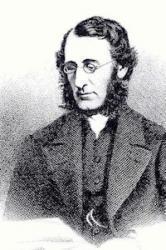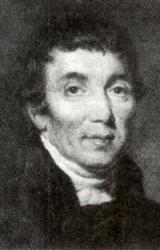Planning worship?
Check out our sister site, ZeteoSearch.org,
for 20+ additional resources related to your search.
- |
User Links
Search Results
Jesus, I live to Thee
Author: Rev. Henry Harbaugh Appears in 165 hymnals Used With Tune: PENPARK
Jesus, I live to Thee
Ai am fy meiau i
Author: Parch John Elias Appears in 5 hymnals Used With Tune: PENPARK
Ai am fy meiau i
Yn wastad gyda Thi
Author: J. D. B.; H. E. L. Appears in 1 hymnal Used With Tune: PENPARK
Yn wastad gyda Thi
Ai am fy meiau i
Author: John Elias (1774-1841) Hymnal: Welsh and English Hymns and Anthems #26a (1979) Languages: Welsh Tune Title: PENPARK
Ai am fy meiau i
Jesus, I live to Thee
Author: Henry Harbaugh Hymnal: Welsh and English Hymns and Anthems #26b (1979) Languages: English Tune Title: PENPARK
Jesus, I live to Thee
Yn wastad gyda Thi
Author: J. D. B.; H. E. L. Hymnal: Mawl a chân = praise and song #129a (1952) Languages: Welsh Tune Title: PENPARK
Yn wastad gyda Thi
Henry Harbaugh

1817 - 1867 Author of "Jesus, I live to Thee" in Welsh and English Hymns and Anthems Harbaugh, Henry, D.D., born in Franklin Co., Pennsylvania, Oct. 24, 1817, was of Swiss descent. In early life he was a farmer, carpenter, and teacher; but in 1840 he entered Marshall College, Mercersburg. Entering the ministry of the German Reformed body, he became, in 1844, Pastor at Lewisburg, Lancaster and Lebanon, Pennsylvania, and in 1864 Professor in Theology at Mercersburg. He died Dec. 27, 1867. He was Editor of the Guardian and the Mercersburg Review, in which he advocated what was called "Mercersburg Theology." His published works include sundry books about Heaven; Poems, Philadelphia, 1860, and Hymns & Chants for Sunday Schools, Lebanon, 1861. This last includes his hymns. The best known and most widely used of his compositions are:—
1. Jesus, I live to Thee. [Life consecrated to Jesus.] This hymn is dated 1850. It is No. 391 in the Hymns of the Church, N. Y., 1869; No. 255 in Allon's Supplementary Hymns, London, 1868, and is also in other collections.
2. God most mighty, sovereign Lord. [National Hymn.] Appeared in his Poems, 1860, in 8 stanzas of 8 lines, and headed, "A National Litany hymn." In some collections it is abridged, as in Hatfield's Church Hymnbook, N. Y., 1872, No. 1307; and in others part of it is altered to "Christ by heavenly hosts adored," as in the Reformed Dutch Hymns of the Church, 1869, No. 935, and others.
3. Make the cross your meditation. [Passiontide.] This translation of "Recordare sanctae crucis" (q.v.) appeared in the Mercersburg Review, 1858, p. 481, and in his Poems 1860. It is worthy of more attention than it has received.
[Rev. F. M. Bird, M.A.]
--John Julian, Dictionary of Hymnology (1907)
==================
Harbaugh, H., p. 484, ii. From No. 2, “God most mighty, &c," the cento, "Thou, by heavenly hosts adored" in the Songs of Christian Praise, N. Y., 1880, No. 658, is taken.
--John Julian, Dictionary of Hymnology, Appendix, Part II (1907)
Henry Harbaugh
James Drummond Burns

1823 - 1864 Person Name: J. D. B. Author of "Yn wastad gyda Thi" in Mawl a chân = praise and song Burns, James Drummond, M.A., was born at Edinburgh, February 18, 1823. He studied and graduated M.A. at the University of Edinburgh. In 1845 he became Free Church minister of Dunblane, but resigned through failing health, in 1848, and took charge of the Presbyterian Church at Funchal, Madeira. In 1855 he became minister of Hampstead Presbyterian Church, London. Died at Mentone, Nov. 27, 1864, and was buried in Highgate Cemetery, London.
His hymns appeared in:—
(l) The Vision of Prophecy: and other Poems (Edin., Edmonston and Douglas). This was originally published in 1854, and enlarged in 1858. The Poems are distinguished by vivid colouring and poetic imagination, along with directness, delicacy of execution, pensive sweetness, and tenderness. They have never however become widely popular. Included are 29 "Hymns and Meditations," many of which rank among the very best of our modern hymns for beauty, simplicity of diction, and depth of religious feeling. (2) The Evening Hymn (Lond., T. Nelson & Sons), 1857. This consists of an original hymn and an original prayer for every evening in the month— 31 in all. The Hymns and Prayers alike are characterised by reverence, beauty, simplicity, and pathos. Some of the hymns in this volume are now well known; e.g. "Still with Thee, 0 my God," "Hushed was the evening hymn," "As helpless as a child who clings." (3) Memoir and Remains of the late Rev. James D. Burns, M.A., of Hampstead. By the late Rev. James Hamilton, D.D. (London, J. Nisbet & Co.), 1869. Besides 13 Sermons and the Memoir, this work includes 40 “Hymns and Miscellaneous Pieces." A number of these had appeared in periodicals. Some of them are very good though not equal to those previously published. Also 39 translations of German hymns, which appeared in the Family Treasury, &c., are rendered exactly in the metres of the originals and many had not previously been translated. The translations are generally very good. (4) Burns also wrote the article Hymn in the 8th edition of the Encyclopedia Britannica. [Rev. James Mearns, M.A.]
-- John Julian, Dictionary of Hymnology (1907)
=====================
Burns, James Drummond, p, 197, i. Additional hymns in common use are:—
1. Not, Lord, unto that mount of dread. Safety in Christ. From Vision of Prophecy, 1st ed., 1854, p. 266.
2. O Thou whose tender [sacred] feet have trod. Resignation. From Vision of Prophecy, 1st ed., 1854, p. 227.
3. Thou, Lord, art love, and everywhere. Divine Love. From Vision of Prophecy, 2nd ed., 1858, p. 275.
--John Julian, Dictionary of Hymnology, Appendix, Part II (1907)
See also in:
Hymn Writers of the Church
James Drummond Burns
John Elias

1774 - 1841 Person Name: Parch John Elias Author of "Ai am fy meiau i" in Cân a Mawl John Elias was a Christian preacher in Wales in the first half of the 19th century, as part of the Welsh Methodist revival. His preaching was noted as being exceptionally powerful, "as if talking fire down from heaven". On one occasion it is said he preached to a crowd of 10,000 people. He was a strict High-Calvinist who believed in the literal truth of the Bible. At one stage he argued strongly for the controversial doctrine of Elected Salvation, meaning that salvation was pre-ordained for a select few. He came to be known as Y Pab Methodistaidd in Welsh (The Methodist Pope) because of his forthright views. Despite his wide interests, he was a religious conservative who opposed all forms of political Radicalism as well as the assertion, popular at the time amongst Nonconformists in Wales, that "the voice of the people was the voice of God".
John Elias was born at Abererch near Pwllheli on 6 May 1774 as John Jones.
For much of his early life he was brought up by his grandfather, and possessed the rare ability at the time to read both Welsh and English from an early age. He was able to read the Welsh Bible when between four and five years old. On Sundays they attended the parish church in the morning, and in the afternoon they would walk long distances together in order to hear some of the Methodist Revivalists.
The religious impressions of his younger days were deepened by a visit to Bala Association or Synod in 1792. The preaching there persuaded Elias to become further involved in the Christian faith. He left home and stayed with Griffith Jones at Penmorfa, Caernarvon, a weaver by trade and also a local preacher. Some weeks before being received into church-fellowship, he conducted family prayers during the absence from home of his master. The news of this spread abroad and caused a stir in the religious circles of the neighbourhood. They marvelled that he should pray in public. Griffith Jones commented - "His penetration and importunity in his prayers made us all marvel greatly."
"A day to remember," he wrote, "was that one day - Christmas Day in the year 1794 - when I was received a member of the Monthly Meeting, and permission was given me to preach the Gospel of Christ. I was then only twenty years and six months old, and only one year and three months old as professor of religion." His progress as a preacher was very rapid.
He proved himself to be a gifted young man, a born speaker. His passion also for work was intense. With all his might he laboured night and day in order to make amends for what was lacking in former days.
He was received into the Caernarvonshire Presbytery of the Welsh Calvinistic Methodists at Christmas 1794.
Soon after New Year's Day 1799 he moved to Anglesey. On 22 February he married Elizabeth, daughter of Richard Broadhead of Llanbadrig, Anglesey. The couple were happy, loving and deeply sympathetic with one another, they enjoyed a life of sweet companionship for over twenty-nine years, until her death on 2 April 1828. They had four children; two of them died in infancy and two survived their father.
In 1830 following his second marriage he moved to Llangefni, where he lived until the day of his death, 8 June 1841. He is buried at Llanfaes Churchyard. A celebrated clergyman of the Church of England wrote in his diary,--"To-day, June 15, was buried the greatest preacher in Wales, and, perhaps, the greatest in the kingdom. May the Lord have mercy upon his church, and favour her again with such a minister as Elias was, like a flaming seraph in the pulpit." 10000 people are estimated to have attended his funeral.
John Elias was the author of numerous works in Welsh, all on a theological or doctrinal theme. He contributed regularly to the early Calvinistic Methodist periodical Y Drysorfa and wrote an autobiography, which was published long after his death. His most influential works in his day were Traethawd ar y Saboth (1804) and Golygiad Ysgrythurol ar Gyfiawnhad Pechadur (1821).
--en.wikipedia.org/wiki/
John Elias


 My Starred Hymns
My Starred Hymns

